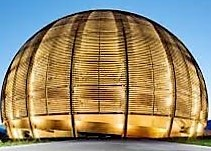Speaker
Description
The $^{17}$O(n,$\alpha$)$^{14}$C reaction is considered in astrophysical codes for its role in the astrophysically relevant "s(slow)-process" since it could act as a possible “neutron-poison” for the neutron induced nucleosynthesis thus influencing the final stellar abundances of some elements such as Fe, Ni or Sr. Thus, its reaction rate must be known in the energy region of interest for astrophysics, going from few keV’s up to about 400 keV. At such energies, the intermediate $^{17}$O+n$\rightarrow^{18}$O nucleus presents four excited levels (8038, 8125, 8213, and 8282 keV’s) affecting the magnitude of the $^{17}$O+n cross section at astrophysical energies because of the neutron emission threshold at 8044 keV for $^{18}$O. Although the role of the two 8213 keV (J$^{\pi}$=2$^{+}$) and 8282 keV (J$^{\pi}$=3$^{-}$) was already investigated in the direct measurements, insufficient informations are up to now available about the 8125 keV (J$^{\pi}$=5$^{-}$) resonant level, thus requiring a detailed experiment.
Indirect methods have been largely proved in the past as a complementary way of accreting our knowledge about nuclear structure and low-energy cross section measurements. Among these, the neutron induced reaction cross section appear to be of particular interest since their role both for unstable and stable beams. In view of this, we report here the combined study of the $^{17}$O(n,$\alpha$)$^{14}$C accomplished by the Trojan Horse Method (THM) and the Asymptotic Normalization Coefficient (ANC) method. The low lying resonances 8038, 8125, 8213, and 8282 keV in $^{18}$O are studied and $\Gamma_n$ are derived. A comparison with recent data and recent THM experimental data is presented. The independent ANC investigation corroborate our previous THM results, confirms the consistence of the two indirect investigation and shows new frontiers also in view of neutron induced reactions with radioactive ion beams.




